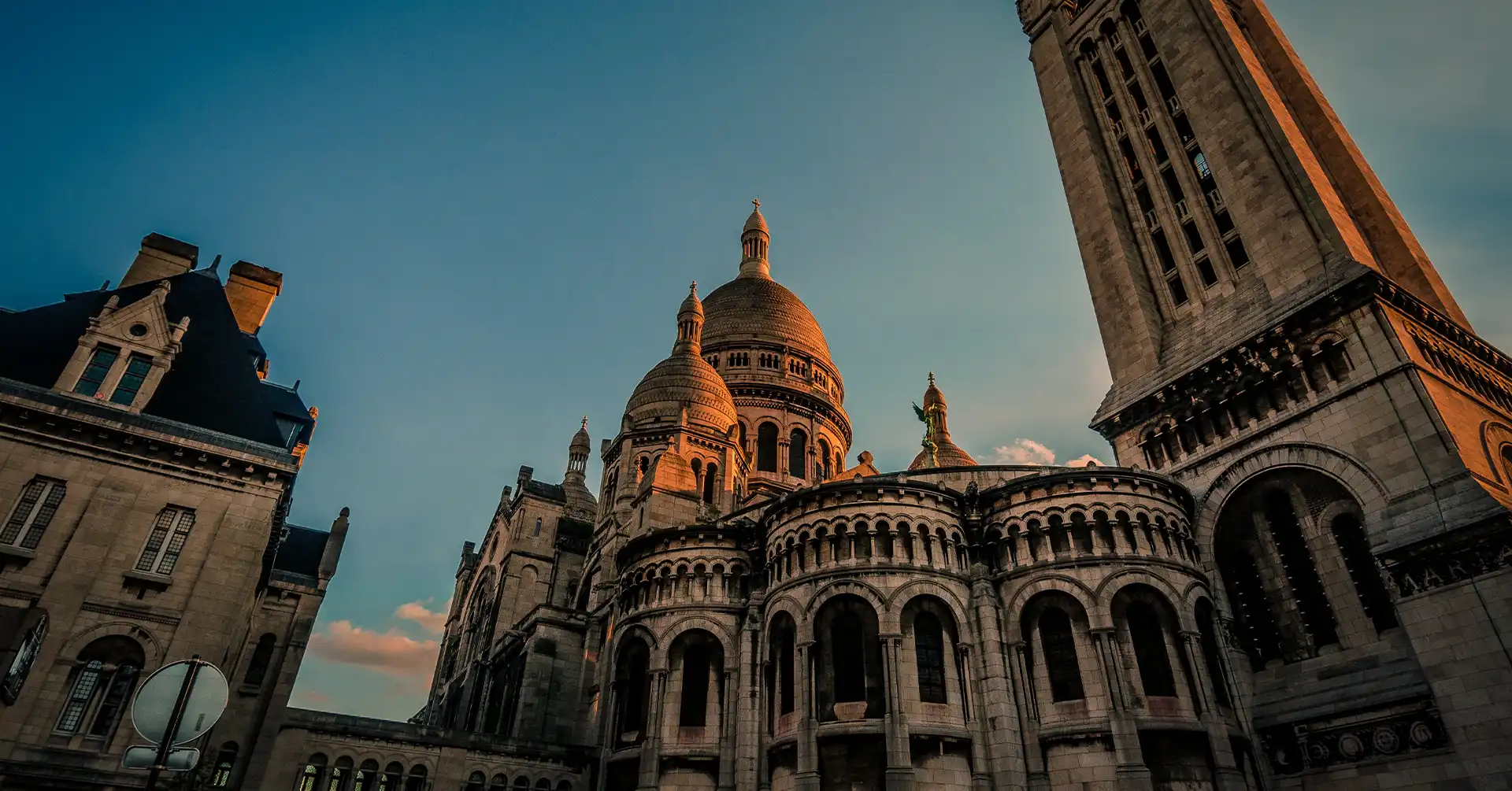Hello, my wonderful readers! Explore the captivating history and fascinating facts of the iconic Notre Dame Cathedral in this illuminating blog. Situated on the Île de la Cité in Paris,it it stands as a testament to medieval craftsmanship and religious devotion. Its soaring spires and intricate facade have captured the hearts of millions worldwide.
Delve into the rich tapestry of Notre Dame’s past, from its construction in the 12th century to the modern-day challenges it has faced. Learn about the masterful architecture that has made it an enduring symbol of Gothic artistry. Discover the stories behind its famous gargoyles, breathtaking rose windows, and legendary bells, including the renowned Emmanuel Bell.
Despite enduring centuries of tumultuous history, including the devastating fire of 2019, Notre Dame Cathedral remains a beacon of hope and resilience. Join us as we unveil the mysteries and marvels of this architectural masterpiece, celebrating its cultural significance and timeless allure. Notre Dame Cathedral awaits, ready to enchant and inspire all who behold its majestic beauty.
How was The Notre Dame Cathedral Made?
The construction of the Notre Dame Cathedral was an extraordinary feat of medieval engineering and craftsmanship. Begun in 1163 under the supervision of Bishop Maurice de Sully, the cathedral’s construction took over a century to complete.
Builders utilized traditional techniques of the time, including stone masonry and Gothic architecture principles. Large quantities of limestone, sourced from quarries near Paris, formed the foundation and main structure of the cathedral. Skilled artisans meticulously carved and shaped each stone block to fit precisely into place, creating the intricate details seen in the facade and interior.
The cathedral’s iconic flying buttresses were a revolutionary architectural innovation designed to support the immense weight of the stone walls and vaulted ceilings. These external supports allowed for thinner walls and larger windows, contributing to the cathedral’s striking appearance and abundant natural light.
Master craftsmen crafted elaborate sculptures and reliefs adorning the exterior, depicting biblical scenes, saints, and grotesques. The intricate rose windows, including the famous south rose window, were meticulously assembled from thousands of individually crafted glass pieces, creating breathtaking displays of color and light.
The construction of Notre Dame Cathedral relied heavily on the labor of skilled stonemasons, carpenters, and artisans, whose dedication and expertise brought Bishop de Sully’s vision to life. Despite centuries of wear and occasional renovations, the cathedral stands as a testament to their ingenuity and craftsmanship, continuing to inspire awe and reverence in visitors from around the world.
Why The Notre Dame Cathedral Made?
The construction of the Dame was initiated to symbolize religious devotion, architectural prowess, and civic pride. Several key reasons motivated the creation of this iconic structure:
Religious Center:
Notre Dame Cathedral was intended to be a spiritual focal point for the growing Christian population of Paris and the surrounding region. As the Archdiocese of Paris seat, it was designed to host important religious ceremonies, including coronations, baptisms, and royal weddings.
Symbol of Power:
The cathedral’s grandeur and imposing architecture reflected the power and influence of the Catholic Church and the French monarchy during the medieval period. Its construction was supported by both ecclesiastical and secular authorities, emphasizing the close relationship between church and state.
Cultural Heritage:
Notre Dame Cathedral was envisioned as a testament to the artistic and cultural achievements of the French people. Its intricate sculptures, stained glass windows, and majestic spires showcased the craftsmanship and ingenuity of medieval artisans, contributing to the cultural identity of Paris and France.
Pilgrimage Site:
The cathedral was built to attract pilgrims from far and wide, drawn by the opportunity to worship relics housed within its walls. Notre Dame housed several important relics, including the Crown of Thorns and a fragment of the True Cross, making it a significant religious pilgrimage and devotion destination.
Civic Identity:
Notre Dame Cathedral served as a symbol of civic pride and unity for the people of Paris. Its construction was supported by the collective efforts of clergy, nobility, and commoners alike, fostering a sense of community and shared purpose among the city’s residents.
In summary, those who built Notre Dame Cathedral had multiple purposes in mind, including fulfilling roles in religious worship, political symbolism, cultural expression, pilgrimage, and communal identity. Its enduring significance resonates with people worldwide, making it a cherished landmark and symbol of human achievement.
Important Historical Facts
- Construction Initiation: Bishop Maurice de Sully initiated the construction of Notre Dame Cathedral in 1163.
- Architectural Marvel: Skilled craftsmen employed traditional techniques, such as stone masonry and Gothic architecture principles, to erect the cathedral.
- Flying Buttresses: The architects incorporated innovative flying buttresses to support the weight of the walls and ceilings, enabling larger windows and thinner walls.
- Completion Timeline: The construction of Notre Dame took over a century, concluding in the mid-13th century.
- French Revolution: In the late 18th century, the French Revolution caused damage to Notre Dame, leading to its repurposing as a warehouse.
- Restoration by Viollet-le-Duc: In the 19th century, architect Eugène Viollet-le-Duc spearheaded a restoration project, adding spires and restoring damaged portions.
- Napoleon’s Coronation: in a grand ceremony at Notre Dame, Napoleon Bonaparte crowned himself Emperor of France in 1804.
- World Wars: Notre Dame survived World War I and II, though it faced potential damage threats during the conflicts.
- Fire of 2019: A devastating fire broke out on April 15, 2019, causing significant damage to the cathedral’s roof and spire.
- Ongoing Restoration: Following the fire, extensive restoration efforts have been underway to rebuild and preserve Notre Dame Cathedral for future generations.
Importance of the Cathedral
The Notre Dame Cathedral holds immense significance for multiple reasons, ranging from its architectural marvels to its historical and cultural importance:
Architectural Masterpiece:
Notre Dame Cathedral is an unparalleled example of Gothic architecture, showcasing intricate details, soaring spires, and magnificent rose windows. Its construction techniques and innovative features, such as flying buttresses, have influenced countless other churches and cathedrals worldwide.
Religious Center:
As Paris’s Archdiocese seat, Notre Dame Cathedral has been a pivotal site for worship and pilgrimage for centuries. Hosting numerous religious ceremonies, including coronations and funerals of prominent figures, has cemented its status as a sacred space.
Cultural Heritage:
The cultural fabric of Paris and France deeply weaves Notre Dame Cathedral, embodying centuries of artistic and historical significance. Its sculptures, stained glass, and decorations epitomize medieval craftsmanship, drawing admirers worldwide.
Symbol of Resilience:
Throughout its long history, it has withstood numerous challenges, including wars, revolutions, and natural disasters. Notre Dame’s resilience showcases the French spirit and human ingenuity in overcoming adversity.
Tourist Attraction:
Millions visit Notre Dame Cathedral yearly to admire its beauty, learn its history, and feel its spiritual ambiance.
It symbolizes Paris and attracts tourists eager to explore the city’s cultural heritage.
National Icon:
Notre Dame Cathedral symbolizes French history, identity, and values, deeply resonating with the nation’s people. Art, literature, and film have depicted it, reinforcing its status as a national icon and source of pride.
The importance extends far beyond its physical structure. It represents a convergence of art, religion, history, and culture, embodying past and present generations’ collective aspirations and achievements.
Conclusion
The journey through the history and facts of Notre Dame Cathedral unveils a narrative of resilience, beauty, and cultural significance. From a medieval symbol to a global icon, it captivates hearts worldwide.
Despite adversity, Notre Dame Cathedral symbolizes humanity’s resilience and architectural excellence. The cathedral’s spires, sculptures, and windows remind of builders’ ingenuity and creativity.
Visitors, marveling at its majestic facade, join a legacy spanning centuries as they explore its hallowed halls. it embodies humanity’s heritage, blending past and present to celebrate beauty, faith, and culture.
Exploring Notre Dame’s history and facts deepens understanding and fosters appreciation for its enduring legacy.
At dusk, Notre Dame Cathedral stands as a beacon of hope and inspiration for future generations.
Read More:






